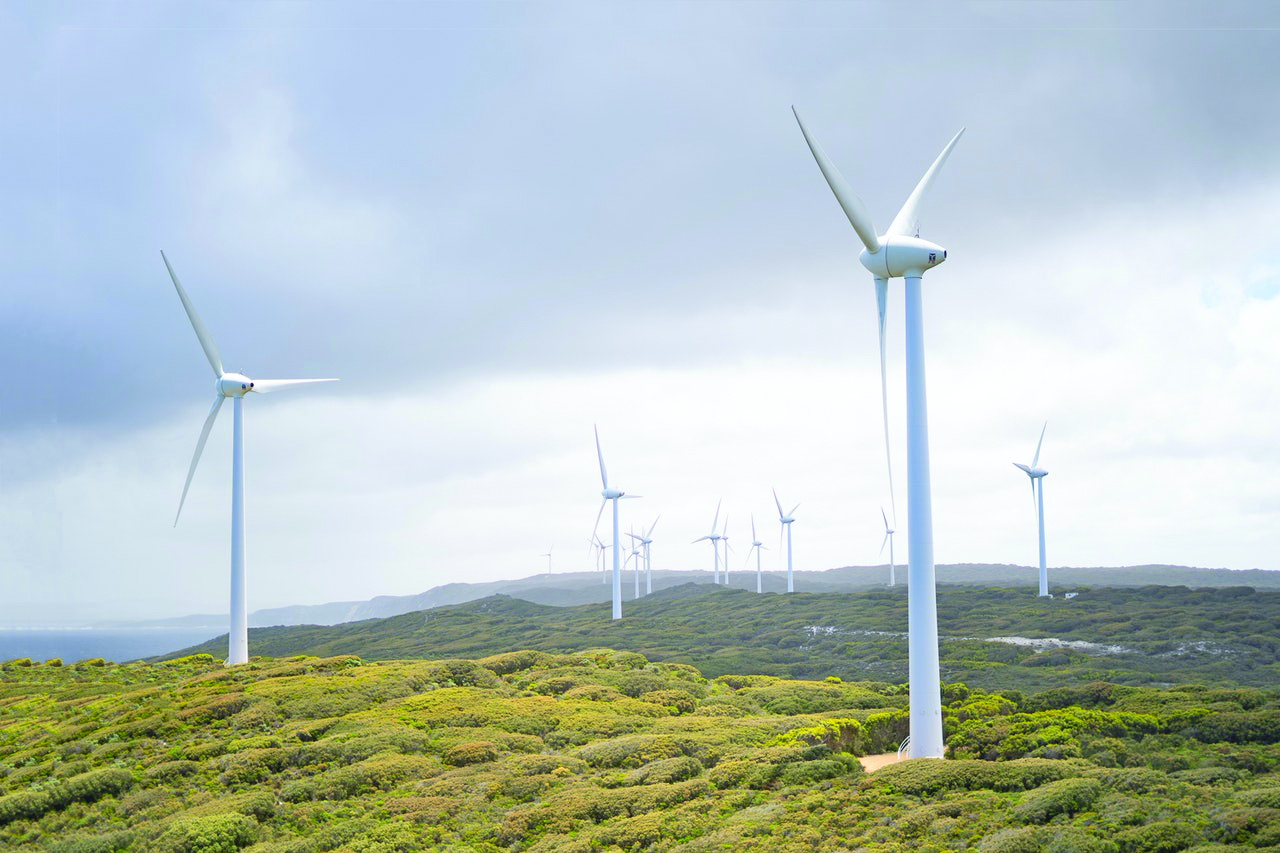Canada wants to have net-zero carbon emissions by 2050, and it is pushing those goals with some interesting organizational changes.
And while 2050 may feel like it’s a million years away, it’s only 30, so the clock is ticking to get policies in place, and in place quickly.
As part of that goal, renewable energy associations decided to merge into one with the recent unification of the Canadian Wind Energy Association and the Canadian Solar Industries Association with the Canadian Renewable Energy Association. Now, wind, solar, and energy storage can speak as one voice to expedite the country’s energy aspirations.
“The future of our technologies hinges on a couple of things, and the key driver is going to be climate policy clearly,” said Robert Hornung, president of the Canadian Renewable Energy Association. “Canada has made a commitment to net zero greenhouse gas emissions by 2050. Every single study that has looked at that question in Canada says you have to do two absolutely central things to get there: One is you have to decarbonize electricity production, and Canada’s in a good position with that; 80 percent of its electricity production is currently non-emitting. But that means there’s 20 percent of committing technology that has to be taken off the system. And we believe that wind and solar will capture most of that opportunity going forward.”
Part of the Solution
But that is only part of the solution in order to get to net zero, because that electricity has to be used to substitute for fossil fuels and other applications, according to Hornung.
“Whether it’s in transportation through electric vehicles, whether it’s in industrial processes, whether it’s in buildings,” he said. “And in Canada at a minimum, studies have shown that this would require probably a doubling of electricity production to be able to do that. That represents a tremendous opportunity for our industries because we sort of tick off a lot of those needs.”
By implementing multiple renewable alternatives, a reliable product gets provided, and from a policy-making perspective, for climate change in particular, regulatory changes and market frameworks are going to be needed to ensure technologies are competing on a level playing field, according to Hornung.
“Our industries are not scared of competition,” he said. “They’re keen to compete. They just want to make sure we’re on a level playing field when we’re doing so.”
For example, in provinces such as Ontario and Alberta, energy storage doesn’t have a fair shot to compete because most jurisdictions don’t actually provide a way for it to receive compensation for the services it provides, according to Hornung. By changing the frameworks to recognize the value that these technologies bring to the system, it creates mechanisms that allow them to be compensated for providing that value to the system.

Helping Canadian Business
And that can end up being hugely advantageous to Canadian businesses. “Just with wind energy, we’ve demonstrated how we’re the most cost-competitive source of new electricity generation available in Canada,” Hornung said. “The biggest barrier and the biggest challenge to getting new wind onto the grid is electricity demand. Many parts of Canada have electricity surpluses; electricity growth is slow and obviously has fallen with COVID coming around. When we look at opportunities going forward, again bringing the technologies together, we think it will open more doors because, increasingly, customers like utilities are not just looking for energy. They’re looking for energy and a whole range of services that can be provided to the grid.”
And that means looking beyond long-term power purchase agreements, and getting more creative with contractual arrangements and market mechanisms that can give the ability to provide a broader range of services while opening up potential sources of revenue and driving development opportunities, according to Hornung.
“We think that bringing these technologies together and exploring how we can create regulatory frameworks and market rules that enable these technologies to be deployed and to capitalize on their strengths will essentially grow the pie for everyone,” he said. “And that’s where they’re interested.”
Energy Efficiency
With businesses looking for more creative ways to take advantage of renewables, Hornung emphasized that, although renewable technologies are an important part of the solution, they’re not the whole solution.
“Energy efficiency is clearly going to be critical,” he said. “What energy we do produce and use, we need to use as efficiently as possible. And when we look at a target like 2050 — 30 years away — we need interim targets that we can measure against. We would argue they should be legislated that we move toward, we need to continue. In Canada, we do have a carbon price. We need to continue to have carbon pricing. That price needs to increase over time to continue to send the signal to investors that we need to move away from greenhouse gas. And we need strategic approaches to do things like electrified transportation, which in itself is a large task, and that is not just a matter of changing pricing. There are regulatory changes that are required; there’s infrastructure investments that are required.”
And in Canada, carbon pricing clearly plays a role in getting to that 100 percent renewable goal, according to Hornung.
“We’re already phasing out coal-fired generation through regulation, and we need to think seriously about how we’re going to treat natural gas generation going forward,” he said. “We need to invest in new infrastructure that will facilitate both the deployment of renewables and also their integration, for example, with inter-provincial transmission lines. And we need to recognize that we’re going to have a significant growth as well, coming forward in terms of electricity production. We need to work to make adjustments to our regulatory frameworks to enable that and to account for that. It’s not as simple as saying, ‘We just need the technology.’ I would argue we have the technology in order to move in this direction. What we don’t have are the regulatory and market, and, frankly, policy frameworks that enable us to efficiently deploy those technologies to enable us to achieve our goals. That’s what we need to work on.”

Pandemic Challenges
The unfortunate reality of COVID-19 has created its own set of challenges when it comes to the renewable sector in Canada, especially with larger, utility-scale projects, but Hornung pointed out that it has affected other aspects in surprising ways.
“For the larger projects, utility scale projects, the impact has really been on construction schedules and supply chain sorts of issues and availability; these projects are continuing to move forward, but they’re increasingly challenged to meet deadlines,” he said. “For the behind-the-meter side, I would say the challenge has been larger when you think about, for example, somebody who’s putting solar panels on a home, they’ve just gone through an extended period where homeowners have been very cautious about having somebody come over. It’s been tough to do that kind of business.”
The sector has been faced with many challenges related to the pandemic, but it is Hornung’s hope that Canada will emulate other countries like the European Union and invest in economic stimulus measures that will enable the country to, not just deal with the economic impact of COVID-19, but also help it address other issues such as climate change at the same time.
Government stimulus strategies in response to COVID-19 can serve to create high-quality and widely dispersed jobs, while also putting Canada on a viable pathway to net-zero greenhouse gas emissions by 2050. According to Hornung, this could and should involve:
- Support for labor-intensive work such as the deployment of solar energy and energy storage systems for homes and commercial and institutional buildings across Canada.
- Support for major new electricity infrastructure such as new transmission lines and energy storage projects, which will enable better integration and use of wind and solar energy.
- Support for the electrification of transportation and the production of green hydrogen from wind and solar energy, which could create new industrial opportunities while reducing greenhouse gas emissions from transportation.
“It’s our hope that there will be new opportunities emerging from that,” he said. “The other point I would make about COVID is that it’s obviously posed a challenge for the industry in terms of its own procedures and processes. Everyone’s first concern is the health and safety of their workforce. And so, people have had to make adjustments and plan, and I think that the industry has responded very well in that regard to those challenges. It’s also had an impact in terms of future prospects in the sense that we have seen a significant decline in electricity demand associated with the economic downturn resulting from COVID.
And there’s a lot of uncertainty as to when, or if, that electricity demand will come back. In terms of looking at potential future procurement processes, I think there’s a bit more uncertainty about that right now, at least until we have some more clarity about what the economic recovery is going to look like.”
Like many countries, Canada has seen an increase in residential electricity demand since residents are spending more time at home or are working from home, which has been more than offset by electricity use in the commercial and industrial sectors, according to Hornung.
Working with the U.S.
With Canada moving forward with its progressive energy goals, it’s hard not to speculate what kind of impact it might have on North America as a whole when the United States’ renewable energy policies are in flux.
“Similar to the U.S., in Canada the policies that are driving action on climate change are not just a question of the federal government; provincial and state governments and municipal governments all are playing a very significant role,” Hornung said. “And I would say, from our perspective, we would like to see collaboration between these countries in terms of addressing this challenge. We think one area where Canada can play a particularly important role, vis-a-vis the U.S., is in terms of our non-emitting electricity base. We do see real opportunities for increase. Canada’s already a significant exporter of electricity to the United States, but as the United States moves forward and sees things like electrification and transportation and continued growth in that area, we think Canada will have the opportunity to provide more electricity to the U.S. that is non-emitting, that’s low cost, and that can help the U.S. in terms of moving to address its own greenhouse gas challenge. From our perspective, we see potentially a significant role for Canada in terms of being a source of clean power for the United States, but also an opportunity to help to balance some of the variability that the U.S. is going to experience as well in terms of bringing more renewable generation onto the grid.”
Some of that will be dealt with through energy storage and other tools in both Canada and the U.S., but Canada has a large hydroelectric base that will perform that function in parts of the country, according to Hornung. It has the opportunity to do a similar thing in the U.S.
“We already have seen, for example, agreements between Minnesota and Manitoba,” he said, “where Manitoba is using its hydroelectric capacity to help manage the variability of wind energy on Minnesota’s grid.”
But in Canada, changing the design of electricity markets and the regulatory frameworks that govern them will be a complex and time-consuming process, according to Hornung.
“Success in 2050 depends on decisions taken today — and the wrong decisions could lock us into pathways that will make it impossible to achieve net-zero emissions in 2050 without stranding assets and investment,” he said.





































